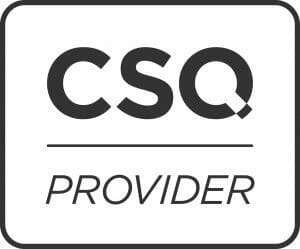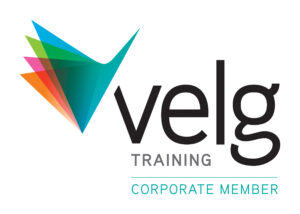About this Course
Course Description:
The Work Safely at Heights 1 day course provides the training needed to obtain a Work Safely at Heights (RIIWHS204E). Upon passing the course, you’ll be certified to work at heights in any industry where these working conditions are found.
Successfully completing this course will allow you to inspect, fit and use height safety equipment whilst working at heights.
Location:
We offer regular public courses at our Sydney NSW, Melbourne VIC, and Brisbane QLD facilities.
Additionally, private courses can be arranged at our facilities or we can come to you!
Book our convenient portable heights trailer for onsite courses, ensuring a seamless training experience.
Course Outline
- Available at Ingleburn, Salisbury, and Carrum Downs
- Working at heights training available for onsite training
- Nationally recognised
- Online booking available
The course is a combination of classroom learning and practical training in real world simulated scenarios. It is structured to cover the mandatory legal and practical requirements needed to undertake any work done at height, whether it’s climbing ladders or working on scaffolding or suspended platforms.
By the end of the course, you will have the knowledge and skills to effectively plan and work safely at height on any work site in Australia.
Upon successfully completing your training and assessment, you will be issued with a Statement of Attainment – RIIWHS204E Work Safely at Heights. This allows you to inspect, fit, and use height safety equipment to work at height in any workplace in Australia.
Course Availability & Pricing
Please see our public course dates below. If there are no dates available or you would like to arrange a private course at your site or ours, then please select the ‘Private courses’ button.
Course Outcomes
Learning Outcome
On completion of the course, participants will have gained the following skills and knowledge in:
- Legislative Requirements: WHS, Australian Standards and Codes of Practice
- Planning to work at Heights: Hazard management and consultation
- Following Procedures: Equipment Inspections, reporting and manufacturer’s instructions
- Working at Height: access, egress, height safety equipment use.
- Conclude Work: Clean up, inspection, storage and reporting
Further Information
Legal requirement for working safely at heights
In Australia, working at heights requires prior training and certification (as a requirement of The Work Health and Safety Act 2011).No employer can legally allow you to work from heights (over 2 metres) without the recognised accreditation.
Employers have a “duty of care” to keep all employees (and the general public) safe, and working from heights is considered a “higher-risk area”. This is because when working from heights there is an increased chance of danger/accident.
Why Get Your RIIWHS204E Work Safely at Heights Certification?
Working any distance above the ground where there is a risk of falling is dangerous so those who do it must know how to do it safely. It’s also a relatively common situation in many industries where employees may be required to climb ladders or work on suspended platforms.
A RIIWHS204E Work Safely at Heights course teaches you how to use the appropriate equipment and work safely in all these various scenarios. It also teaches you to proactively spot and rectify risks and hazards.
Examples of working at heights
Some examples of working from heights include; barriers, scaffolding and elevating work platforms. A range of tools and PPE will also be covered during the course. Working from heights can apply to a range of industries and projects, such as construction sites (rise residential or commercial), entertainment (e.g., stages), sporting events (e.g., arenas) and more.
Why Choose Kallibr Training in NSW & QLD
Kallibr Training is the number one choice of RTO for many companies for good reason. We have purpose-built training facilities equipped with industry standard equipment in 3 states.
We’re also able to simulate real-world working environments so our students can train and practice in conditions they’re going to experience on the job. This type of training and exposure is invaluable, and may not always be possible with some RTOs.
Unique Training Methods
A Kallibr Training training yard is typical of many real-life working conditions with personnel and equipment moving around. Students thus gain first-hand experience dealing with busy workplace conditions.
From multi-story structures with fixed ladders and platform roofs to identifying risks and hazards and pro-actively resolving them to avoid dangerous situations… It’s all in a day’s working at heights training at Kallibr Training.
Experienced Work Safely at Heights Instructors
A course is only as good as its instructors, which is why our fully accredited instructors have many years of industry experience and come from a variety of backgrounds. They can offer our students the benefit of their diverse experiences working at heights in a range of conditions and environments.
Testimonials, credentials, and experience are available if required.
Advanced Modern Equipment
Kallibr Training students train secure in the knowledge they are using industry-standard safety equipment that meets and exceeds Australian Standards AS/NZS1891.4 2009. And, because it is widely used across most industries, they will be familiar with its function and operation in real world use.
They also get plenty of practice climbing fixed ladders and stepping onto platform roofs on our purpose-built multi-story training structures.
Real-World Applications
Our training yards are busy places, designed to simulate on-the-job working conditions. This means our students experience the full range of scenarios they’re likely to encounter in the work place. So, when they graduate they can get straight to work, and use their skills across multiple industries.
Certification and Ongoing Support
Upon successful completion of the course, participants receive a nationally recognised Statement of Attainment – RIIWHS204E Work Safely at Heights and are qualified to work at height anywhere in Australia.
Although this ticket technically doesn’t expire, industry bodies recommend undertaking refresher courses every few years to stay up to date with current techniques and safety legislation, and to refresh practical skills.
Most companies also require RIIWHS204E ticket holders to undertake 2 yearly refresher courses as part of their employment contract.
Kallibr Training Training can organise refresher training at your site OR at any of our sites in Sydney, Melbourne, and Brisbane.
Flexible Training Options
We run public RIIWHS204E – Working at Heights courses during business hours at our training facilities. However, this may not suit everyone so we offer a range of flexible private training options to suit, including part-time, weekend, and evening courses. These can be run at our place or yours. Our portable heights trailer is also available for private training courses as required.





